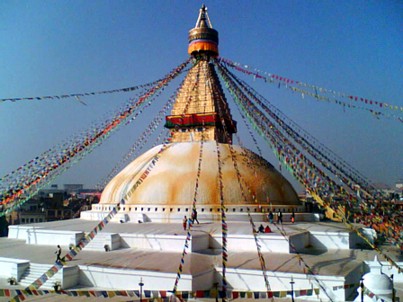Stupa: Difference between revisions
Jump to navigation
Jump to search
No edit summary |
|||
| Line 10: | Line 10: | ||
==External Links== | ==External Links== | ||
*[http://www.khordong.de/Engl/India/stupa_info.html ''The Benefits of Building a Stupa, Offering Prostrations, Presenting Offerings, Circumambulating It, and Making Aspirations'', by Chatral Sangye Dorje Rinpoche] | *[http://www.khordong.de/Engl/India/stupa_info.html ''The Benefits of Building a Stupa, Offering Prostrations, Presenting Offerings, Circumambulating It, and Making Aspirations'', by Chatral Sangye Dorje Rinpoche] | ||
*[http://www.himalayanart.org/pages/stupa/index.html Stupa: Art and Architecture outline page at Himalayan Art Resources] | |||
[[Category:Key Terms]] | [[Category:Key Terms]] | ||
Revision as of 16:18, 21 May 2009

Stupa (Skt. stūpa; Tib. chöten; Wyl. mchod rten) — a reliquary monument symbolizing the enlightened mind of the buddhas. They can vary in size and shape, but often have a wide square base, a rounded middle and a tall conical section at the top.
Further Reading
- Stupa: Sacred Symbol of Enlightenment, Crystal Mirror Vol. 12, Dharma Publishing, 1997. ISBN 0898002842